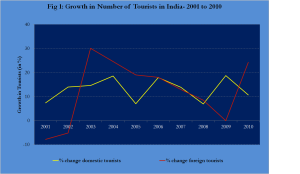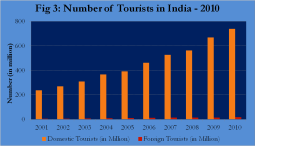Budget proves to be a dry affair for tourism with no incentives, said Subhash Goyal, President of Indian Association of Tour Operators (IATO).
“As government was showing seriousness about tourism prospects in the country mainly for its contribution to national exchequer and job opportunities even at remotest places where no other industries can reach, we were very optimistic that tourism will get due recognition in this year budget. We had accordingly submitted our wish list to the Ministry of Finance through Ministry of Tourism. Our main recommendation was to accord tourism “Export Industry Status” with benefits that are given to export-oriented industries also be made available to tourism industry. This will help to get rid of “Service Tax” which is making India Holiday packages cost prohibitive and in-competitive as compared to Thailand, China, and Malaysia etc. Because of multiple taxes which entail “Double Taxation” tour operators can’t match the price which the competitive countries are offering. We strongly needed this special consideration for the poor run of the Indian tourism industry which it had since last three financial years due to global economic downturn in the major traffic generating markets which contribute maximum tourists round the year, said Goyal.
Subhash Goyal criticized the increase in service tax to 12% from 10% which will negatively impact the tourism industry as the package costs will go up due to tax on all components of tourism i.e. air rail ticket, hotel booking, transport etc. and will be detrimental to tourism.
Goyal also added, “Euro zone crises and exchange rate of US$ reaching Rs. 50.00, the packages costs do not help tour operators to keep any margin. We can’t make our packages costly, we may lose even regular business. We pleaded for withdrawal of Service Tax to boost tourism growth but are shocked to see that more areas have been included for service tax which has bearing on tourism”.
“It is unfortunate that tourism is always taxed. How much can you tax one industry year after year which is already burdened with taxes – Luxury Tax, Service Tax, Value Added Tax, Tax on Tax? It is always seen as cash cow rather than encouraging the industry to grow, time and again tourism is first to be taxed. Contribution of tourism sector toward country’s GDP (which is more than 6%) and more than 9% to the employment is always ignored. It is the time, the decision makers show commitment toward tourism as major force for country’s economic growth”, echoed Goyal.
Goyal, however, welcomed the proposal to allow direct import of Aviation Turbine Fuel permitted for Indian carriers as actual users as this may bring down the domestic airfare.
Courtesy: voyagersworld.in
Crosswoods holidays 2011 ------------------------------------------------------------------------Thank You---Post Your Comments Below---------------------------



